
Weird but true: my relationship with Hans Christian Andersen’s fairy tale “The Snow Queen” started with a gas station. A small children’s book edition of the tale was given out as part of a promo at Amoco gas stations in 1989. This is the first time I’d ever read the story and it started a lifelong love affair.
First published in 1844, “The Snow Queen” is one of the unique fairy tales that Hans Christian Andersen penned himself. Unlike the Grimm Brothers who collected traditional folktales told in their country, Andersen most often wrote brand-new, original stories in the same vein. Many of the most famous fairy tales today, such as “The Little Mermaid”, “The Emperor’s New Clothes” and “The Ugly Duckling” we owe to Andersen’s brilliant imagination as they have no antecedent in traditional folklore.
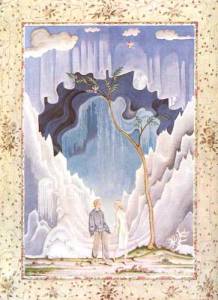
Told in seven parts, the story of “The Snow Queen” begins with two children, Kai and Gerda, who are neighbors in their small town. Their houses are connected by a small garden between and they love to play and tend roses there together. One winter’s day a piece of enchanted mirror flies into Kai’s eye and it distorts his vision so that everything beautiful in the world appears to him as ugly. He turns his back on his friendship with Gerda and becomes mean and cruel. While playing with a gang of rough-and-tumble neighborhood boys he unknowingly hitches his sled onto the sleigh of the evil Snow Queen and she drives him off to her wintery palace. Gerda sets out after them, resolute in her desire to free Kai from the Snow Queen’s icy clutches. She travels far and wide on her quest, meeting princesses, ravens and robbers along the way. Finally, standing within the frozen halls of the Snow Queen’s polar palace, Gerda discovers that the power of love is the only thing that can destroy the Snow Queen’s formidable hold over Kai.
Over the years Andersen’s story has been adapted for nearly every art form – theater, music, film and opera to name a few. As part of my fairy tale year I explored many of the most significant adaptations throughout the month of March and wanted to share a few of my favorites here.
The 1957 Russian animated film was the first movie adaptation of the story. I watched the 1990’s English dub for the first time last month and I was impressed at the level of artistry on display. It’s not surprising to discover that master Japanese animator Hayao Miyazaki credits it as one of his inspirations for working in the field. The film adheres very closely to Andersen’s original storyline and I can’t help but wish that Disney’s Frozen had similarly stayed true to its original source material. Frozen has been acclaimed for its supposed feminist stance but Andersen’s original is even more so in the fact that the story involves a girl saving a boy.
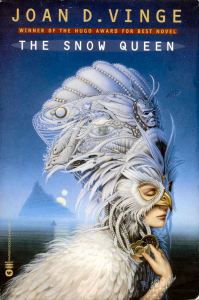 Joan Vinge’s 1980 novel adapts the tale for adult science fiction readers and was one of the first in the genre to include a cast of almost-exclusively female main characters. In the book Gerda and Kai are transformed into the characters Moon and Sparks, two lovers literally separated by time and space by the all-powerful Arienrhod, the Snow Queen who rules their planet. In her quest to reunite with Sparks Moon must uncover and confront numerous secret political machinations. She holds not only Sparks’s fate in her hands but that of their entire world. Andersen’s tale works well in this retelling as an epic journey across an alien landscape. Vinge’s novel starts out a bit verbose and flowery but soon becomes action-filled and tightly-paced. It’s shocking that such a vast and sprawling yarn can fit into less than five hundred pages and demonstrates Vinge’s masterful storytelling.
Joan Vinge’s 1980 novel adapts the tale for adult science fiction readers and was one of the first in the genre to include a cast of almost-exclusively female main characters. In the book Gerda and Kai are transformed into the characters Moon and Sparks, two lovers literally separated by time and space by the all-powerful Arienrhod, the Snow Queen who rules their planet. In her quest to reunite with Sparks Moon must uncover and confront numerous secret political machinations. She holds not only Sparks’s fate in her hands but that of their entire world. Andersen’s tale works well in this retelling as an epic journey across an alien landscape. Vinge’s novel starts out a bit verbose and flowery but soon becomes action-filled and tightly-paced. It’s shocking that such a vast and sprawling yarn can fit into less than five hundred pages and demonstrates Vinge’s masterful storytelling.
The 2002 film Snow Queen is the sweet, modern take on the tale you would expect from a Hallmark production. On my first viewing I appreciated the development of the relationship between Gerda and Kai in the first half, but this time around I found the second half more intriguing. Screenwriter Simon Moore (The 10th Kingdom) cleverly ties the main parts of Gerda’s journey to save Kai into the revolving seasons – in this version Gerda meets the Snow Queen’s three sisters who rule each of the other seasons respectively. From each she learns a different aspect of maturation: the Spring Witch wants to keep Gerda an eternal child; the Summer Princess possesses an adolescent preoccupation with choosing a mate; and finally, the Autumn Robber teaches Gerda the strength and courage she’ll need as an adult. This helps develop Gerda’s character and amplifies the importance of her relationship with Kai. Gerda and Kai’s eventual return home at the end is deservedly emotional and richly satisfying.

Composer Paul K. Joyce’s lyrical 2003 concert oratorio The Snow Queen was adapted for film by the BBC in 2005 with mixed results. I purchased the CD of the score when it was released prior to the film and was enchanted and moved by Joyce’s music. James Andrew Hall was responsible for the film adaptation and most of what’s wrong with it resides in his teleplay. Many of the most moving musical passages in the score are either eliminated (“The Mirror and Its Fragments”) or marred by dialogue (Kai’s rescue by Gerda during “The Snow Queen’s Palace”). Luckily the best song, “Do Not Stand at My Grave and Weep” is retained and filmed adequately if not profoundly. Much was made at the time of the CGI special effects. They do give a “moving storybook” feel to the film but more often than not they seem to hinder the action rather than enhance it. Tiffany Amber Knight, however, is dazzling in her glorious CGI raiment as the Snow Queen.
My favorite adaptation of the tale also premiered in 2005 at Victory Gardens Theater in Chicago. It’s a folk musical version created by Michael Peter Smith. As a birthday present my partner bought us tickets to see the recent Park Square Theatre production in Saint Paul, Minnesota and I was enchanted by how beautifully it captured the spirit of the story. A talented ensemble of actor/musicians, haunting music and gorgeous physical design brought the tale to life and I felt like a child again, discovering the story for the first time. It was a truly moving experience that brought tears to my eyes several times.
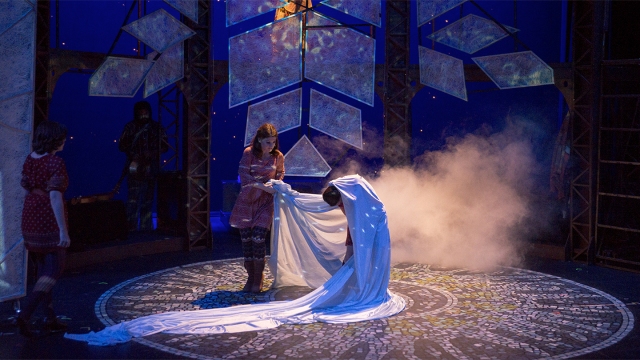
Emily Gunyou Halaas brought a warm presence to her multiple roles including the Narrator and Mother. I especially enjoyed the lovely lullaby she sang as the Finn Woman to Gerda right before the climactic scene in the Snow Queen’s castle. Similarly, Caroline Amos and Silas Sellnow were perfect as Gerda and Kai and Sara Ochs provided a memorable turn as the Sami Woman who led the hilariously punny “Fish Song”.
It’s unfortunate that no official recording has been made of the show since the score is absolutely beautiful. Luckily I was able to find a YouTube video of one of my favorite songs, a duet between Kai and the Snow Queen. It’s a great way to close out my fairy tale month of March:


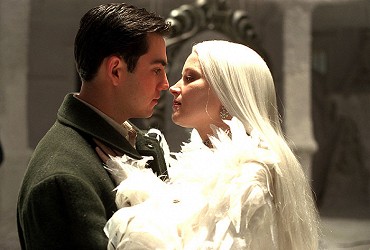
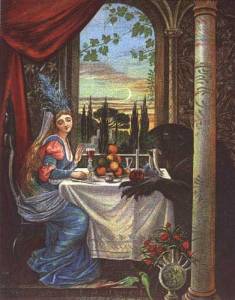
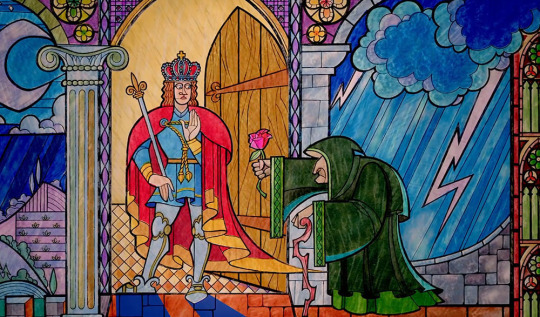 This lack of explanation has proved a creative asset to future retellings of the tale, the most obvious of these being the
This lack of explanation has proved a creative asset to future retellings of the tale, the most obvious of these being the 
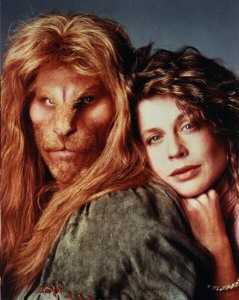
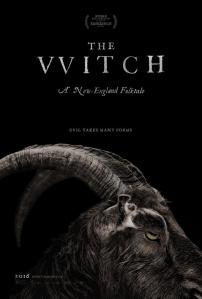 “A New England Folktale”; It’s important to note that subtitle when watching the new film
“A New England Folktale”; It’s important to note that subtitle when watching the new film